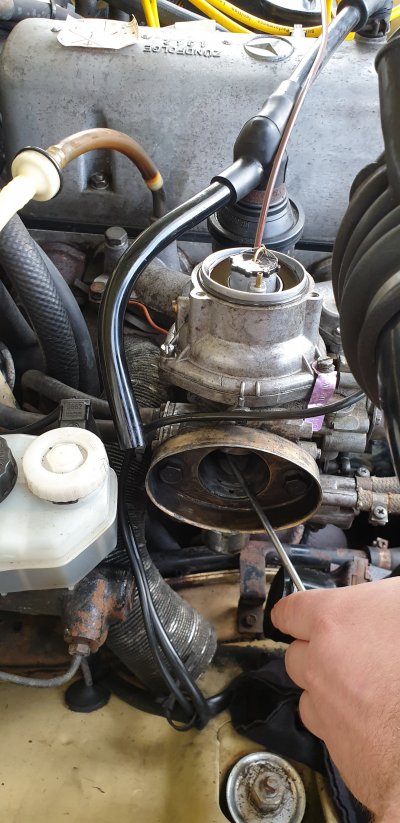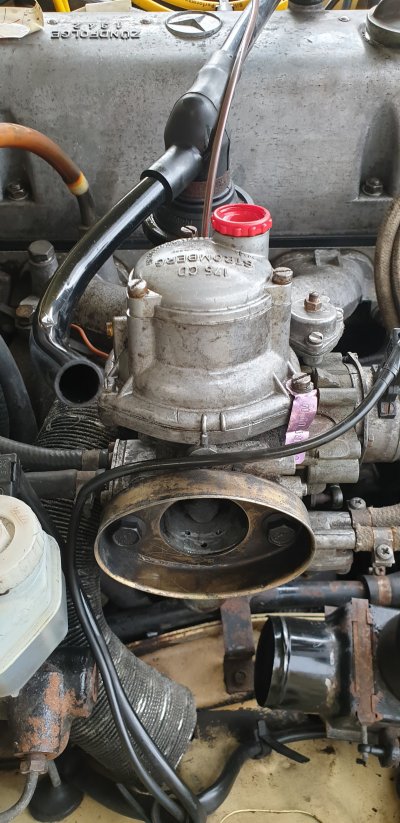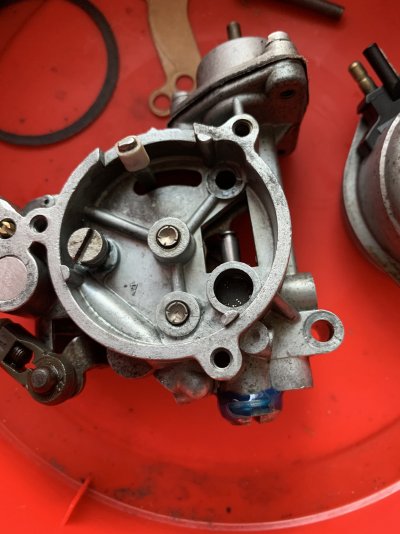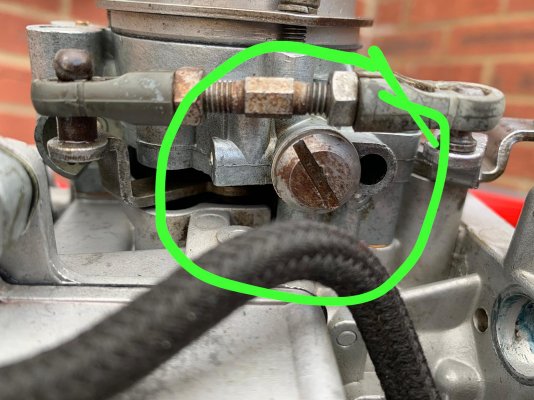I've scoured the internet for guides on Stromberg adjustment and tuning, some are very helpful and in the end I even managed to find a copy of the Haynes manual on Zenith Strombergs - the amount of variants between Zenith/ Stromberg/ Pierburg is staggering - I'm not sure I've seen a photo on the internet of one that's exactly the same as mine. The Ruddies website has been very helpful, from there I've been able to identify mine as a Stromberg 175CD (T- with automatic choke) "Build 3" - as fitted from July 1973 to July 1976. As far as I can tell the difference post 1973 was the addition of the pierburg fuel cutoff solenoid.
I'll give some background at this stage, maybe it will help someone to diagnose or help someone with similar issues!
I got the car in mid 2019, it was running fine but was quite hard to start, then once it was running I had to hold a bit of throttle on until it warmed up - I suspected the automatic choke wasn't working as I'd seen lots on the internet about the choke units causing problems. It wasn't a major problem, and once the car was warm starting up was no problem - I put fixing it on the back burner and enjoyed the car for a few months.
Fast forward to May 2020 and a friend's dad hears me struggling to start the car, offers to take a look. He has a lifetime of mechanical experience with older cars (although not mercedes). He checked the auto choke first and said that when heat was applied the coil moved as it should - I do wonder now if this is the same as it actually working as I see it has a power supply, does it require more than just hot water from the thermostat?
He checked the dashpot and the diaphragm which were fine, so he moved across to look at the distributor and the timing. That's when we saw it - the points in the distributor were completely loose, the screw holding them in had lost tread and was just rattling around. We put a new screw in, set the points gap and put everything back together. Car fired right up but now it had a terrible misfire.
Eventually we pulled the spark plugs and found them completely sooted up. The misfire persisted with clean plugs however. We called in a carburettor mechanic with plenty of experience, but again not on mercs. He adjusted the timing etc, but he found that to get the car to start now he had to connect a 12v feed directly to the fuel cutoff solenoid under the carb. Now at this stage none of us were sure of the operation of the fuel cutoff:
It needed 12v direct for the engine to start, and the engine would start and idle no problem but wouldn't rev.
If the engine was started and the 12v feed taken away the engine would rev put wouldn't idle.
I know now after trawling the internet and taking my own apart that the pierburg fuel cutoff should be fail proof, it was fitted from 1973 onwards and a corresponding delay relay was fitted from the no.4 fuse in the fusebox - when the ignition is switched off, power is sent to the cutoff solenoid for 5/6 seconds to stop fuel and prevent running on (190 I'm sure you'll know this already because it looks like the same setup carried through onto the W123s and eventually W201/124 carb'd cars).
Now, on my W115 I tracked down the little silver relay, it was disconnected - hadn't been touched by us so must have been disconnected all through my ownership. I had noticed the odd bit of overrun on hot days etc but nothing worth writing home about.
That said, I have no idea why we had to put power to that solenoid to start the car - I unscrewed the solenoid assembly which is one piece with the richness adjusting screw and gave it a 12v feed to see what was actually happening - all looked ok, with power on the tiny spherical plastic float stopper shot up and looked like it'd effectively stop fuel, then dropped again when power was taken away. The only thing I can think of is that when inserted through the float chamber maybe the fuel was causing it to float when it shouldn't have. it looks like there is a spring assembly in there but the sphere was sat somewhere in the middle of it, maybe it'd come loose etc.
My next thought was, well let's get rid of the solenoid altogether - enter my £10 ebay purchase Zenith 175. Its from an old Range Rover and doesn't have the solenoid. Its a simple adjustment screw. The float chamber and jet assembly is different, the adjusting screw much shorter - it does screw up into the jet on the Stromberg and is just about long enough to reach the bridge but petrol leaked merrily out past it. The W115 started up, I didn't run it long enough to let the exhaust get hot with the petrol leak (as much as I'm tempted to after all these months).
My thoughts turned to the original solenoid unit - can I just remove the float and spring so it acts like a normal adjusting screw? Well, no - getting them out would be impossible, the holes are too small and I don't want to damage them. What I did was take a thin nail and insert it down through the top of the unit, and gently tap the plastic float stopper down out of the way - that way it can't float up when petrol enters and if its not connected the solenoid won't try to force it up either.
That's almost where I am now - I put the adjustment screw back in, screwed it all the way up to just above the bridge and the car will start - if the piston is lifted with a screwdriver - and if its kept running until warm it will idle, so I went through the steps to tune it as outlined online and in the haynes manual; from idle I gradually made the mixture richer about 1/8th of a turn at a time, lifted the piston about 1mm each time until lifting it made no difference to the RPM. At that point the car was idling at maybe 1800rpm, mine has just the single idle screw that adjusts the butterfly valve - I unscrewed this to as close to roughly 750RPM as I could get, I still think it idles a bit high, in fact its worth noting that the car always did idle fast, again I assumed autochoke, maybe previous owner knew it wasnt working so had the idle adjusted too high to compensate?
With where I tuned it to it would rev happily through the rev range without backfiring and I took it for its first short drive down my lane in months, it actually would let me switch it off and back on again and I did that a couple of times, then I parked it up for 30 seconds while I cleared my tools away, tried to start it again and it just turned without coughing. Again I got someone else to turn it over, lifted the piston with a screwdriver and it fired straight into life. Very frustrating.
If you've made it this far thank you very much for taking the time to listen to my plight! I love the little stroke eight but its given me sleepless nights for months. Tomorrow during the daylight I'll have a go at setting the float level and try adjusting that idle screw back in a bit to see if that helps. Today I sprayed a fine mist of Fairy liquid and water on everything to check for vacuum leaks and all is good on that front.
Thanks 190 and Stratman for your help so far! I'm not ready to give up on the Stromberg yet, a brilliant learning experience if nothing else, you can probably tell a carburettor was a black magic "do not mess with" area for me not so long ago!






